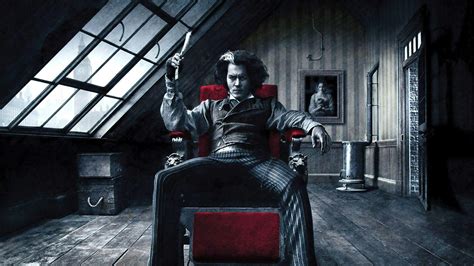The infamous tale of Sweeney Todd, the Barber of Fleet Street, has captivated audiences for centuries with its dark and haunting themes. This character, born from the imagination of Victorian author James Malcolm Rymer, has evolved over time through various adaptations and reinterpretations, solidifying his place in the pantheon of horror icons. At the heart of the story is the symbiotic relationship between Sweeney Todd and his accomplice, Mrs. Lovett, whose sinister plot to murder and bake their victims into pies weaves a macabre narrative that delves into the depths of human depravity.
To fully comprehend the complexity of Sweeney Todd’s character, it’s essential to explore the historical context in which he was created. The mid-19th century, a time of significant social change in England, was marked by an increasing awareness of the stark contrast between wealth and poverty. The industrial revolution was in full swing, and the divide between the haves and the have-nots had never been more pronounced. It was against this backdrop that Rymer penned his tale, weaving elements of horror, mystery, and social commentary into a narrative that would resonate with the anxieties of his contemporary audience.
One of the most striking aspects of the Sweeney Todd legend is its versatility, having been reinterpreted and reimagined in countless forms of media, from stage plays to film adaptations, each offering a unique perspective on the characters and their motivations. The 2007 musical film starring Johnny Depp as Sweeney Todd and Helena Bonham Carter as Mrs. Lovett, for example, brought a new level of sophistication and depth to the story, exploration the psychological complexities of the characters and the societal pressures that drive them to commit such heinous acts.
Despite the variations in interpretation, the core of the story remains the same: a vengeful barber, driven by a past betrayal, seeks revenge on the society he believes wronged him by murdering his clients and, with the help of his accomplice, baking them into pies to be sold to unsuspecting customers. This gruesome premise, coupled with the charismatic yet terrifying persona of Sweeney Todd, has captivated audiences and inspired numerous adaptations and references in popular culture.
The character of Sweeney Todd also serves as a reflection of societal fears and anxieties, embodying the terror of the unknown and the fear of being at the mercy of those in positions of power. His barber shop, situated on Fleet Street, a location steeped in history and once home to numerous barbers and surgeons, becomes a symbol of the intersection between respectability and horror, highlighting the ease with which evil can masquerade as normalcy.
Moreover, the dynamic between Sweeney Todd and Mrs. Lovett is pivotal to the narrative, representing a symbiotic relationship built on mutual need and a shared desire for revenge against the world. Mrs. Lovett, often portrayed as the more pragmatic and cunning of the two, brings a layer of complexity to the story, illustrating how individuals can become complicit in horrific acts when driven by the right mix of desperation and opportunism.
In examining the enduring appeal of the Sweeney Todd story, it’s clear that its success can be attributed to its ability to tap into fundamental human fears and anxieties, while also serving as a commentary on the societal issues of the time in which it was written. The tale of the Barber of Fleet Street continues to fascinate audiences, offering a glimpse into the darker aspects of human nature and the consequences of unchecked ambition and desire for revenge.
The historical significance of Sweeney Todd also lies in its influence on the horror genre as a whole. By introducing elements of psychological terror and the demonic “other” into the narrative, the story has paved the way for countless other horror tales and characters, each contributing to a rich tapestry of fear and suspense that continues to captivate audiences today.
In conclusion, the tale of the Barber of Fleet Street is a complex and multifaceted narrative that continues to captivate audiences with its dark themes, memorable characters, and historical significance. Through its various adaptations and interpretations, Sweeney Todd has become an icon of horror, symbolizing the terror of being at the mercy of those who wield power and the unspeakable acts that humans are capable of committing when driven by revenge and desperation.
What is the historical basis for the character of Sweeney Todd?
+The historical basis for Sweeney Todd is somewhat debated among scholars, with some arguing that he was inspired by real events or figures from 18th-century England. However, it’s also clear that the character as we know him today is largely a product of Victorian fiction and folklore.
How has the character of Sweeney Todd been reinterpreted over time?
+Sweeney Todd has undergone numerous reinterpretations, from stage plays to film adaptations, each offering a unique perspective on his character and motivations. These adaptations have ranged from the campy and over-the-top to the more subdued and psychologically complex, reflecting the versatility and enduring appeal of the character.
What themes does the story of Sweeney Todd explore?
+The story of Sweeney Todd explores a range of themes, including revenge, deception, the blurred lines between good and evil, and the societal pressures that drive individuals to commit horrific acts. It also serves as a commentary on the anxieties and fears of the Victorian era, reflecting concerns about social change, industrialization, and the divide between wealth and poverty.



